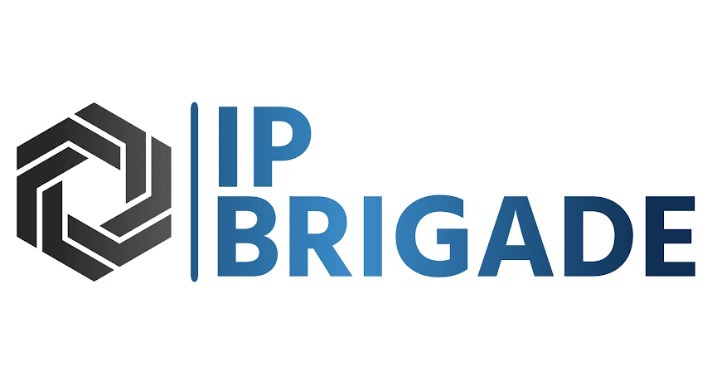In the rapidly advancing world of artificial intelligence, one field stands out for its transformative potential—Generative AI. From creating original artwork and composing music to writing code and generating drug molecules, Generative AI is redefining what machines can do. As innovation accelerates, Generative AI patents have become a critical focal point for inventors, corporations, and IP professionals aiming to secure ownership and competitive advantage in this dynamic landscape.
This blog explores the rise of Generative AI patents, the legal complexities surrounding them, and best practices for innovators seeking robust intellectual property (IP) protection.
Understanding Generative AI and Its Patentability
Generative AI refers to machine learning systems capable of generating new content—be it text, images, designs, or data—that mimics human creativity. In contrast to conventional AI, which categorises or forecasts, generative AI produces. Popular examples include OpenAI’s GPT models, Google’s Gemini, Midjourney, DALL·E, and Stable Diffusion.
With such immense creative output, the natural question arises: Who owns the invention—the human developer or the AI system? This question lies at the heart of the growing debate around Generative AI patents.
Under most patent laws worldwide—including those of the United States Patent and Trademark Office (USPTO), European Patent Office (EPO), and World Intellectual Property Organization (WIPO)—only human inventors can be recognized as patent applicants. AI systems, no matter how intelligent or autonomous, currently lack legal personhood.
However, this hasn’t stopped innovators and companies from filing patents for inventions generated or assisted by AI, leading to an explosion of Generative AI patent filings globally.
The Global Landscape of Generative AI Patents
The race to dominate the Generative AI patent space is intensifying. According to recent IP analytics reports, China and the United States are leading in Generative AI patent applications, followed by Japan, South Korea, and Europe.
China: The China National Intellectual Property Administration (CNIPA) has seen a surge in AI-related filings, with government incentives driving innovation in language models, image synthesis, and AI-driven content generation.
United States: The USPTO remains a key battleground for AI patent ownership, emphasizing human contribution in AI-assisted inventions.
Europe: The EPO applies strict criteria, requiring that AI-assisted inventions demonstrate a clear “technical effect” beyond abstract algorithms.
Corporations such as IBM, Microsoft, Google, Baidu, Tencent, and OpenAI are among the leading assignees in the Generative AI patent space. Their filings often cover neural network architectures, data processing methods, and AI model optimization techniques.
This surge in Generative AI patents signifies more than just innovation—it highlights the strategic importance of IP in shaping the next era of digital creativity.
Key Challenges in Securing Generative AI Patents
Despite the booming interest, obtaining Generative AI patents is not without hurdles. Patent offices face the challenge of balancing innovation with established legal frameworks. Below are the major challenges inventors face:
- Inventorship and Ownership
The central issue revolves around whether AI can be listed as an inventor. Courts in multiple jurisdictions, including the U.S. Federal Circuit (in the Thaler v. Vidal case), have reaffirmed that only humans qualify as inventors. As a result, applicants must demonstrate meaningful human contribution to the inventive process.
- Patent Eligibility
Patent examiners often scrutinize whether a Generative AI-related invention qualifies under 35 U.S.C. § 101 (for U.S. applications). Abstract algorithms, data models, or purely mathematical methods are typically not patentable unless they produce a technical effect—for instance, improving image compression or enhancing speech recognition accuracy.
You can learn more about this topic in our detailed guide on AI Patent Eligibility
- Disclosure and Enablement
Because Generative AI models are complex, inventors must provide a sufficiently detailed disclosure of the invention to satisfy enablement requirements. This includes specifying how the AI model is trained, what datasets are used, and how it achieves the claimed technical result.
- Ethical and Policy Concerns
AI-generated content raises questions about creativity, authorship, and accountability. Patent offices and policymakers are actively debating whether future reforms should recognize AI as a co-inventor or adjust IP frameworks to accommodate machine creativity.
Why Generative AI Patents Matter
For organizations investing heavily in AI R&D, Generative AI patents serve as a crucial shield and strategic asset. Here’s why they matter:
Competitive Edge: Patents grant exclusivity, preventing rivals from using or replicating your AI algorithms or output generation methods.
Investment Value: Venture capitalists and investors favor startups with strong AI patent portfolios, as they signal technological maturity and defensible innovation.
Monetization Opportunities: Licensing and cross-licensing AI patents can open new revenue streams.
Strategic Insights: Patent landscapes help identify emerging competitors, white spaces, and technology trends in the generative AI domain.
Companies that strategically build and manage their Generative AI patent portfolios can lead not only in innovation but also in market control and valuation.
For comprehensive insight, explore Patent Landscape Studies offered by IP Brigade, helping you uncover opportunities and competitor trends across the AI domain.
Case Studies: Pioneering Generative AI Patents
- OpenAI
OpenAI’s innovations in natural language processing (NLP) and image generation have led to several notable Generative AI patent applications. These include methods for fine-tuning large language models and optimizing text-to-image generation.
- Google DeepMind
DeepMind’s patents cover AI architectures capable of generating creative works, from protein structures to realistic simulations. Its Generative AI patents often emphasize the technical improvement of machine learning efficiency.
- IBM Watson
IBM’s AI division holds a vast portfolio of patents focusing on generative design, natural language generation, and AI-driven problem-solving—demonstrating the growing industrial application of Generative AI technologies.
These examples illustrate how Generative AI patents are shaping the future of innovation across diverse sectors—from healthcare to entertainment.
Best Practices for Filing Generative AI Patents
Securing strong Generative AI patents requires strategic preparation. Here are key best practices for innovators and patent attorneys:
- Define Human Contribution Clearly: Always highlight the human inventors’ role in developing, training, or interpreting the AI system.
- Demonstrate Technical Effect: Emphasize how the invention improves hardware efficiency, reduces computational cost, or enhances AI output quality.
- Ensure Full Disclosure: Provide a detailed explanation of model architecture, training data, and processes to meet patent office requirements.
- Monitor Patent Landscapes: Regularly conduct AI patent landscape studies to identify trends, competitors, and new filing opportunities.
- Protect Complementary IP: Beyond patents, secure Patent Drawings and Information Disclosure Statement Preparation (IDSP) Services to ensure a strong IP foundation.
The Future of Generative AI Patents
As AI systems continue to evolve, patent laws will inevitably adapt. Several jurisdictions are already exploring AI-inclusive IP policies, potentially allowing AI-assisted or AI-generated inventions to receive limited protection.
In the near future, we can expect:
- Clearer guidelines from patent offices on AI-assisted inventorship.
- New legal frameworks for AI-generated content ownership.
- Increased reliance on patent analytics to manage the exponential growth of Generative AI innovations.
Organizations that proactively align their IP strategies with these trends will be best positioned to lead the Generative AI revolution.
Conclusion
The age of Generative AI patents is here—and it’s reshaping the boundaries of creativity, innovation, and ownership. As machines continue to generate code, art, and inventions, the question is no longer if they can create, but how we protect what they create.
For innovators and businesses, understanding the intricacies of Generative AI patents is not just a legal necessity—it’s a strategic imperative. Partnering with experienced patent professionals, like the team at IP Brigade, can help navigate the evolving landscape, ensuring your AI-driven innovations are fully protected and strategically positioned for global success.


